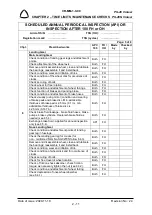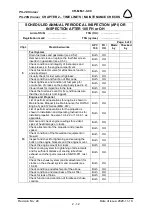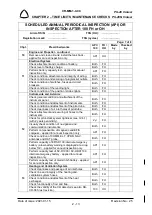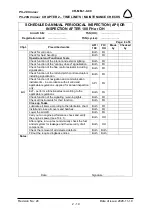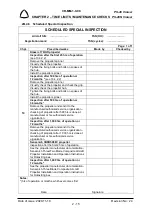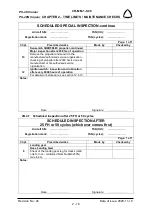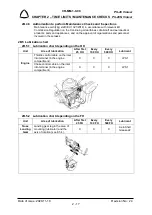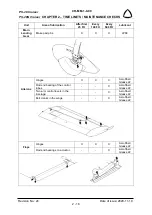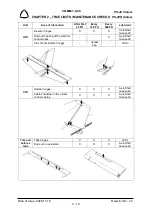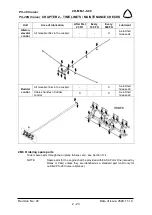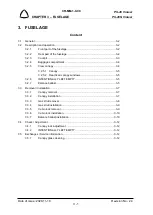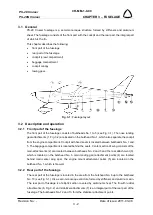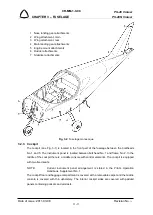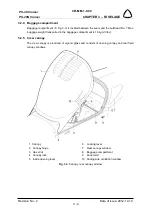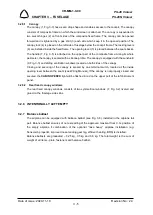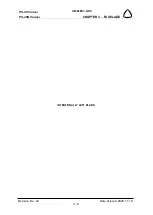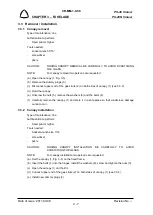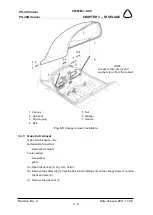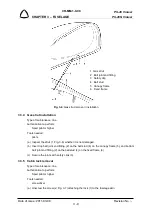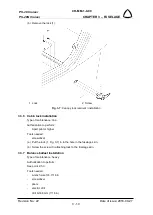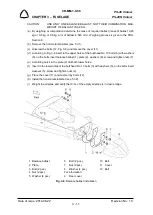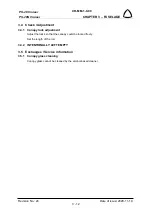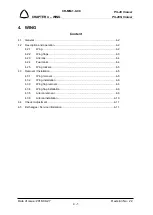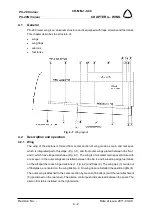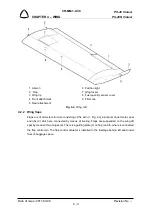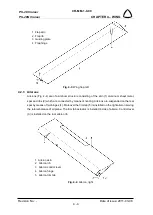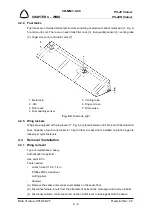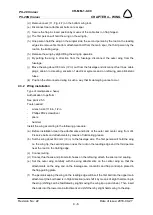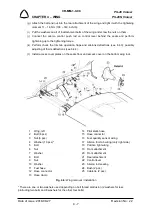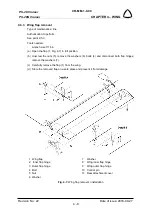
CR-MM-1-0-00
PS-28 Cruiser
PS-28N Cruiser
CHAPTER 3 – FUSELAGE
Date of issue: 2020-11-19
Revision No.: 24
3 - 5
3.2.5.1
Canopy
The canopy (1, Fig. 3-3) has a semi drop shape and enables access to the cockpit. The canopy
consists of composite frame on which the windscreen is attached. The canopy is suspended in
two swivel hinges (2) on front sides of the composite fixed frame. The canopy can be opened
forward and is lightened by a gas strut (3) each side which keep it in the opened position. The
canopy lock (4) is placed on the left side of fuselage below the cockpit frame. The locking levers
(6) are installed inside the fixed frame. The opening lever (5) is placed between the seats backs.
The handle (7, Fig. 3-5) is attached on the upper part of the composite frame. Along its whole
perimeter, the canopy is sealed with a silicone profile. The canopy is equipped with the sunshield
(9, Fig. 3-3) and sliding ventilation windows located on both sides of the canopy.
Closing and securing of the canopy is sensed by one terminal switch, located at the inside
opening lever between the seats (see Wiring Manual). If the canopy is not properly closed and
secured, the
CABIN OPENED
light will be flashed in red on the upper part of the left instrument
panel.
3.2.5.2
Rear fixed canopy windows
The rear fixed canopy windows consists of two symmetrical windows (7, Fig. 3-2) riveted and
glued on the fuselage side skins.
3.2.6 INTENTIONALLY LEFT EMPTY
3.2.7 Balance ballast
The airplane can be equipped with balance ballast (see Fig. 3-8), installed in the airplane tail
part. Balance ballast ensures of not exceeding of the approved maximal front C.G. position of
the empty airplane if combination of the optional “nose heavy” airplane installation (e.g.
Sensenich propeller, improved nose landing gear leg, efficient heating, BRS) is installed.
Balance ballasts are graduated – 0.25 kg, 0.5 kg and 0.8 kg. The total weight is the sum of
weight of all items - plate, fasteners and balance ballast.

